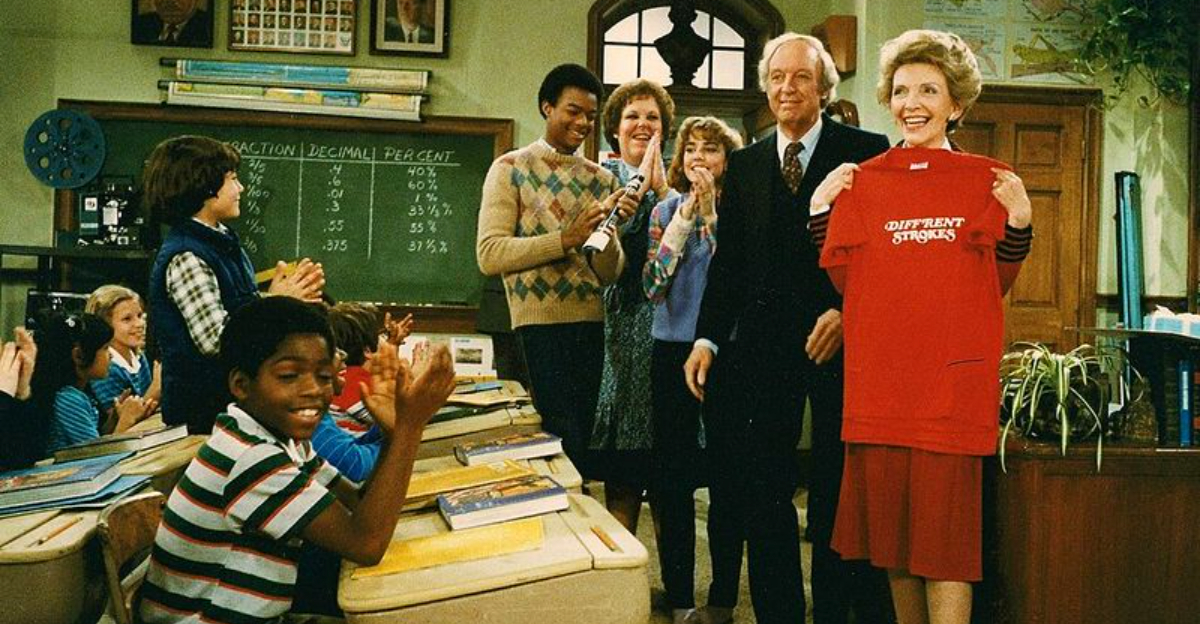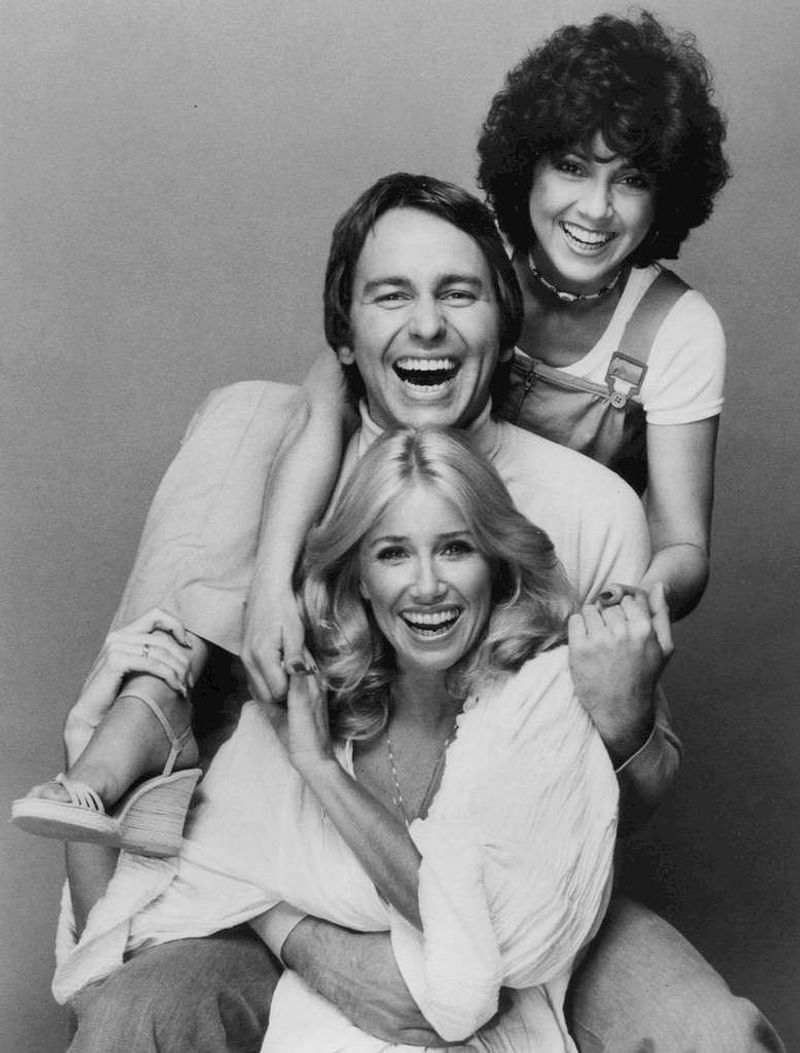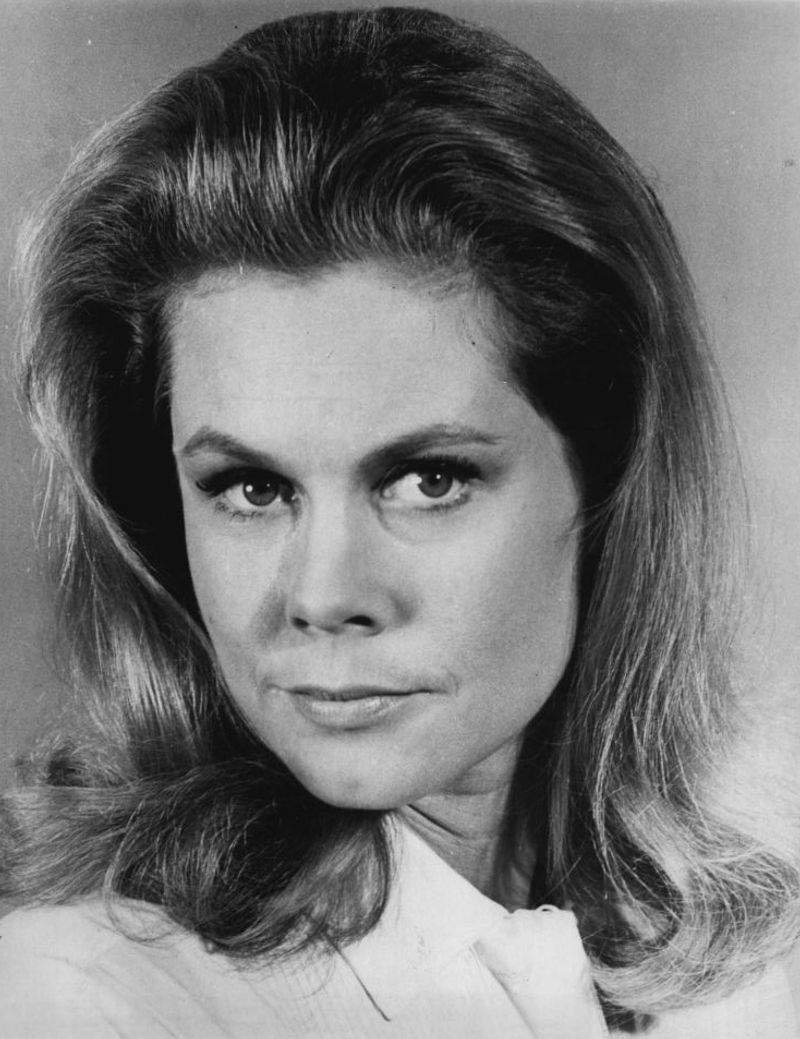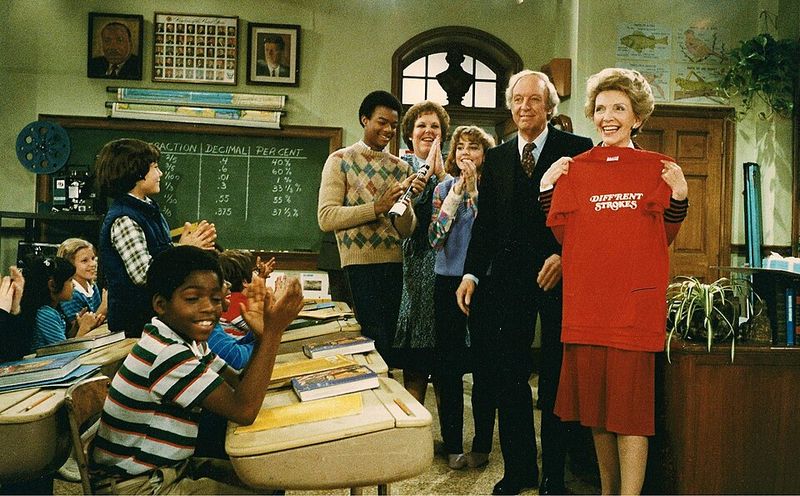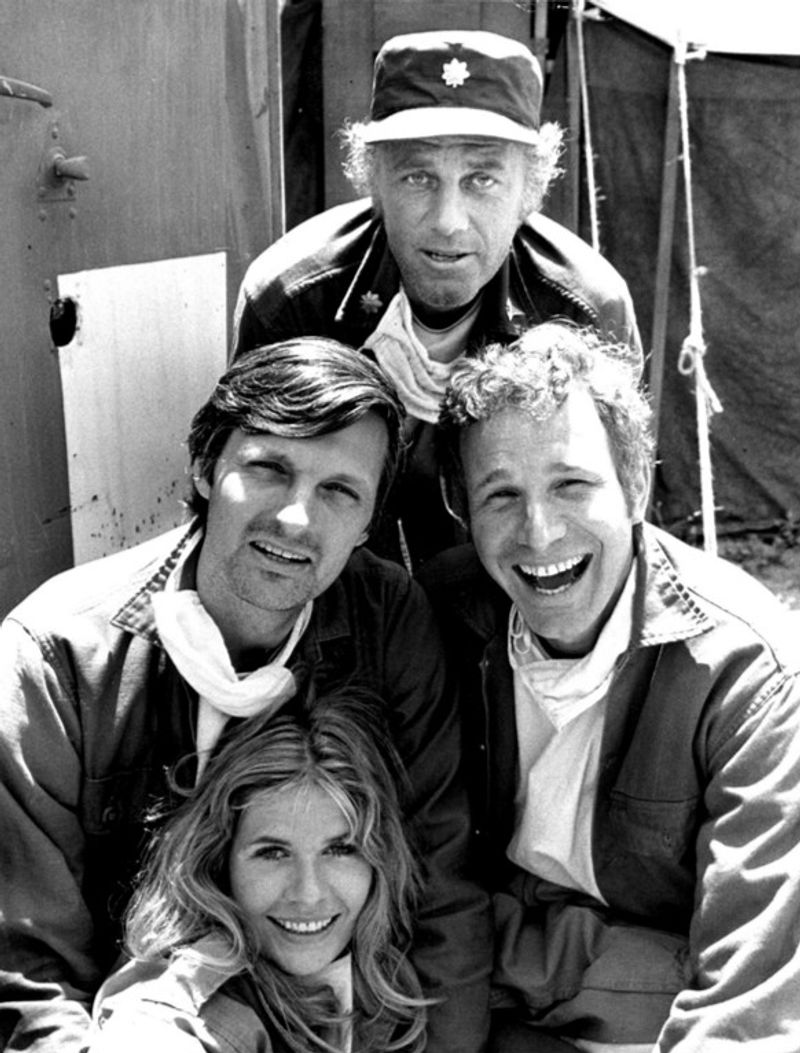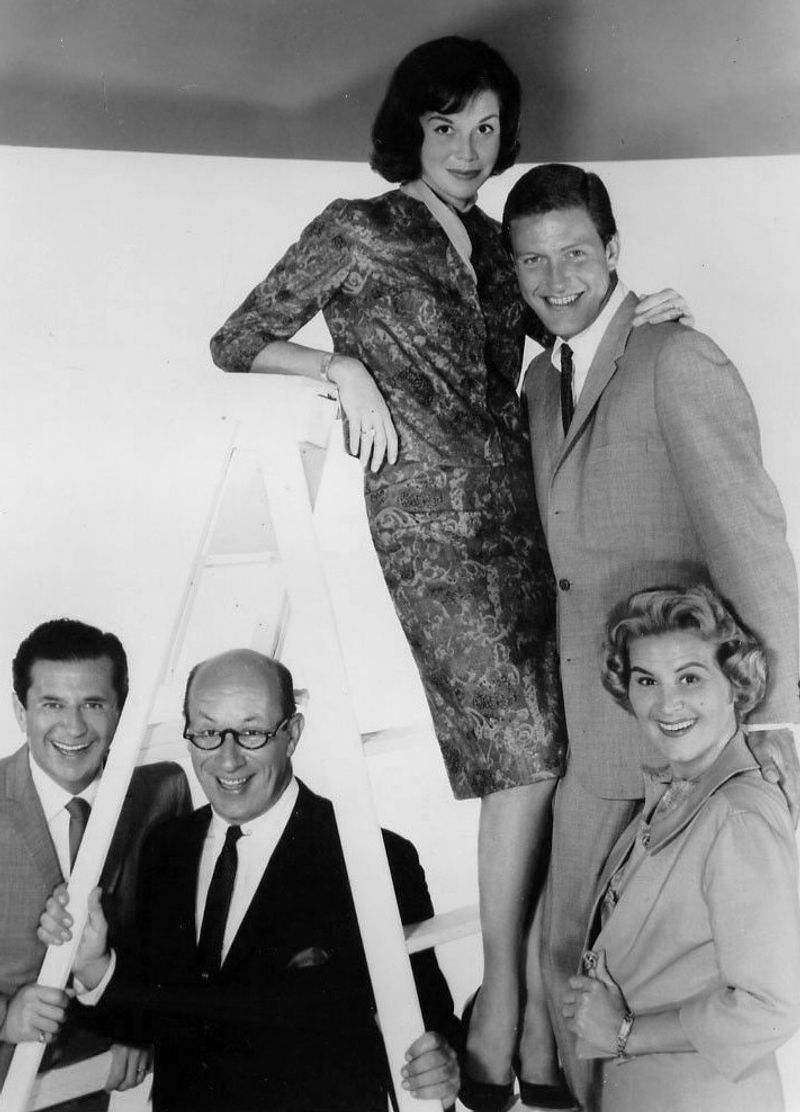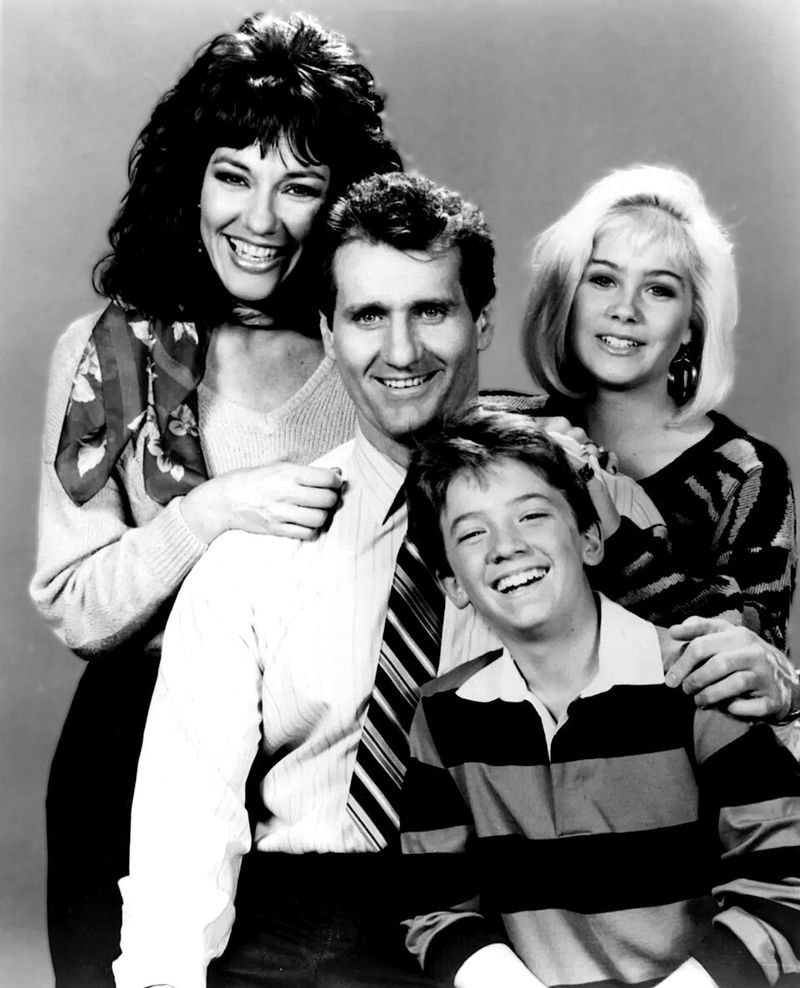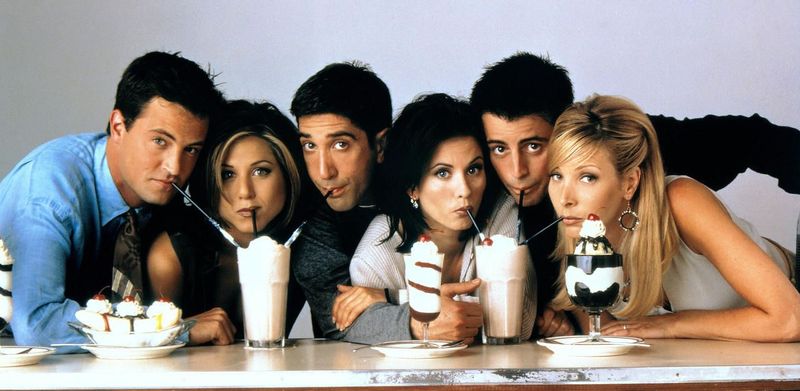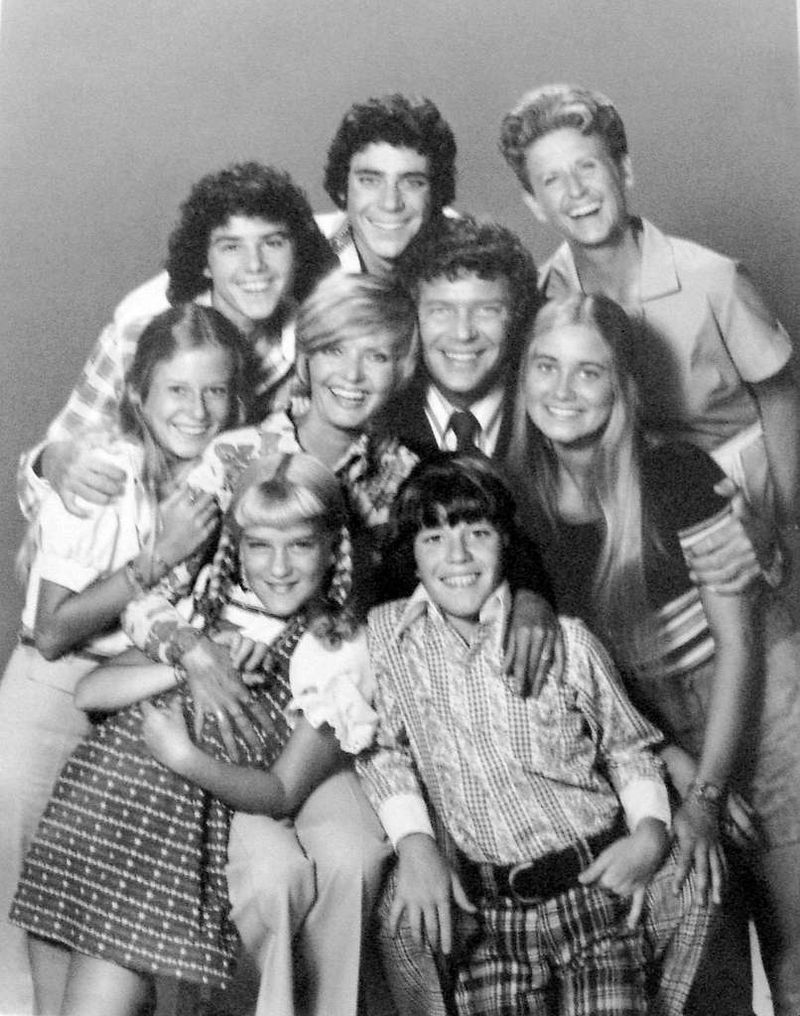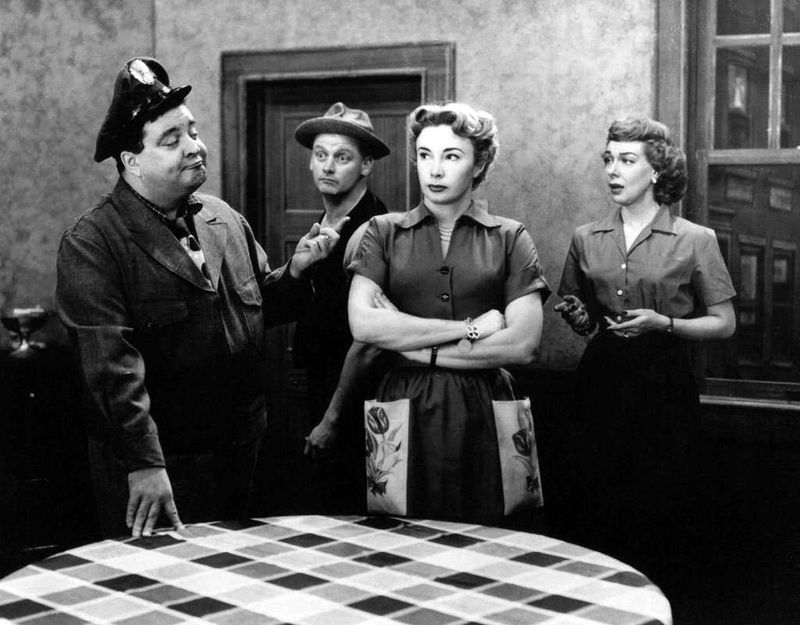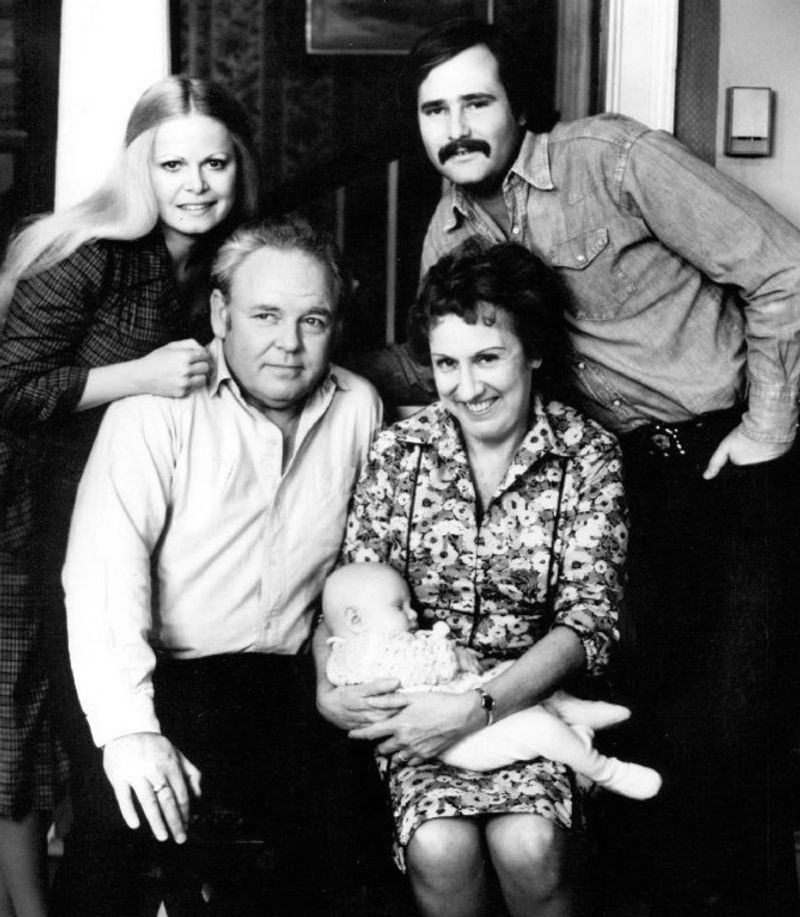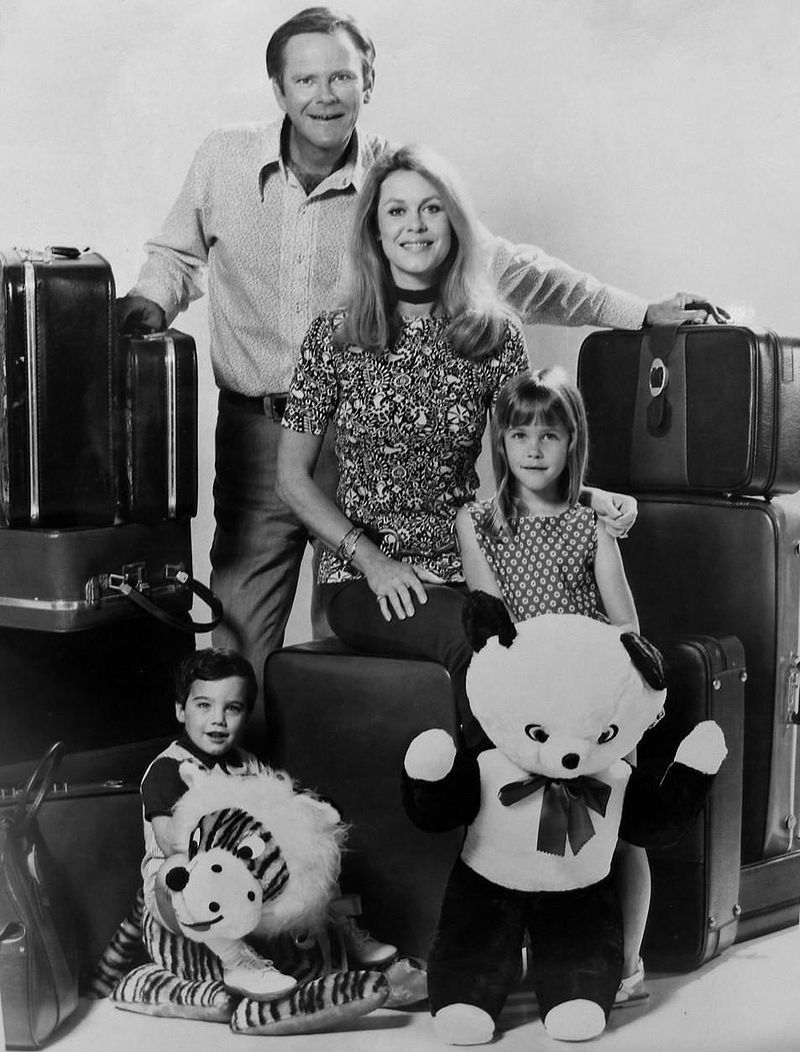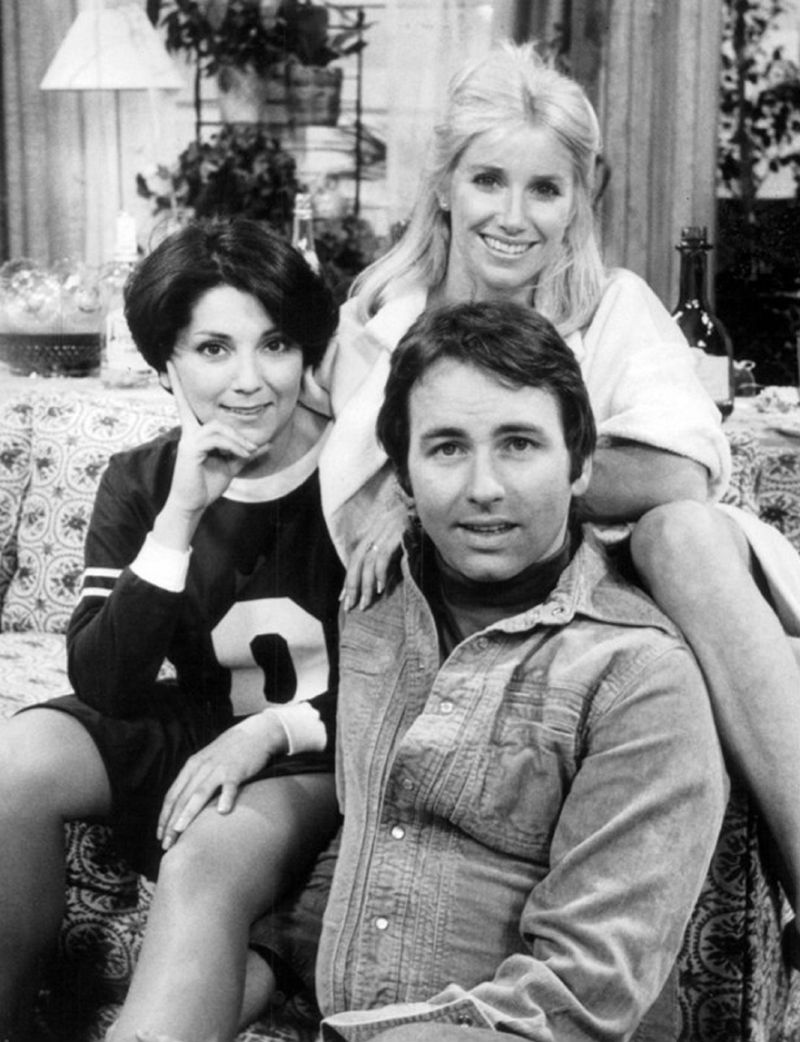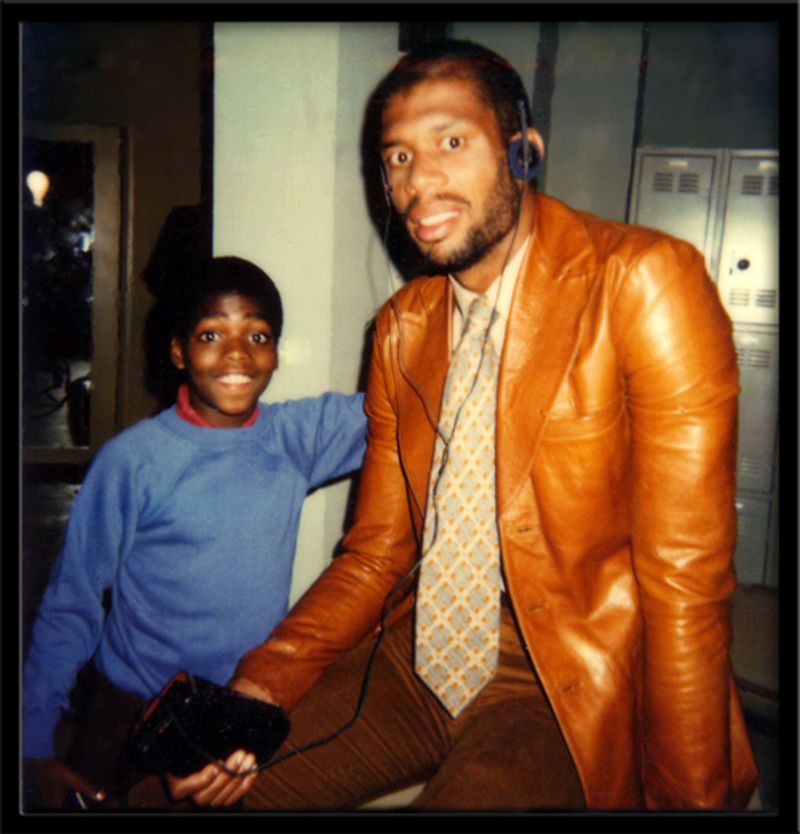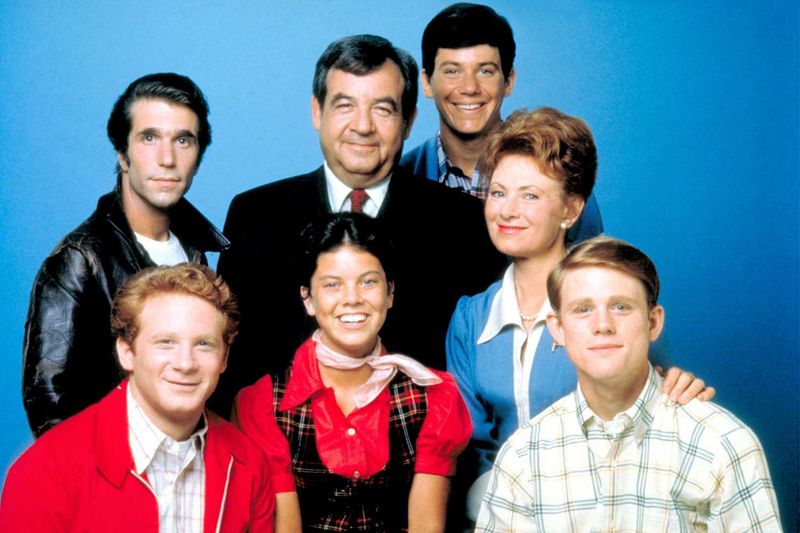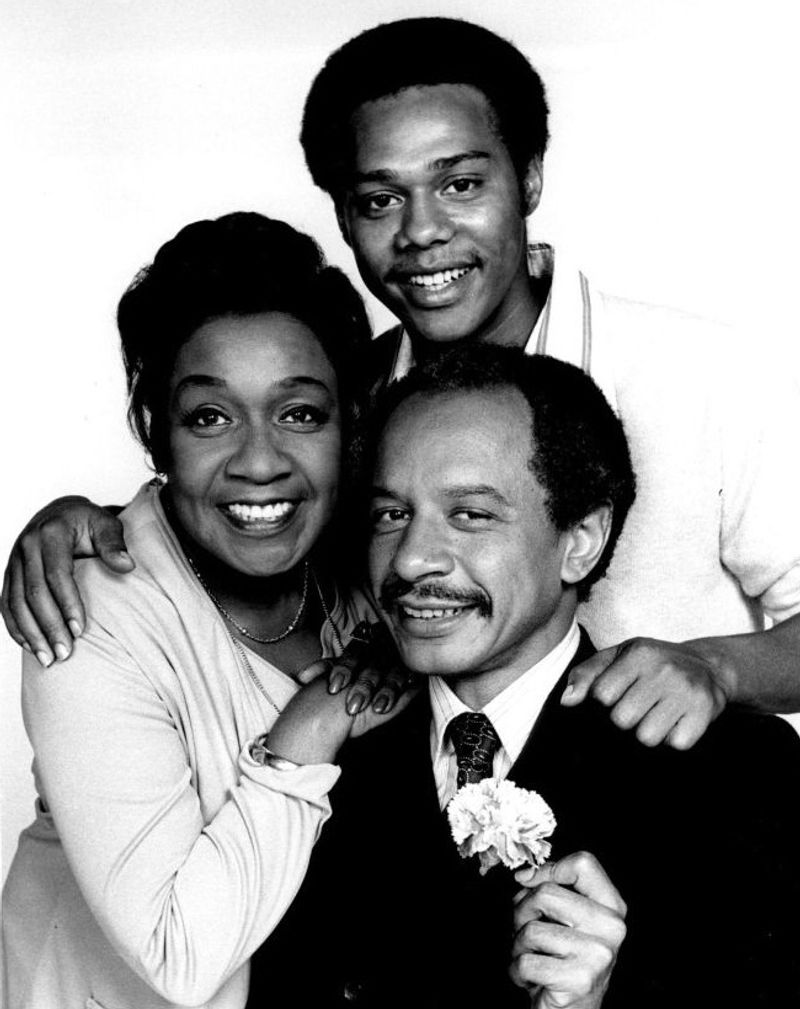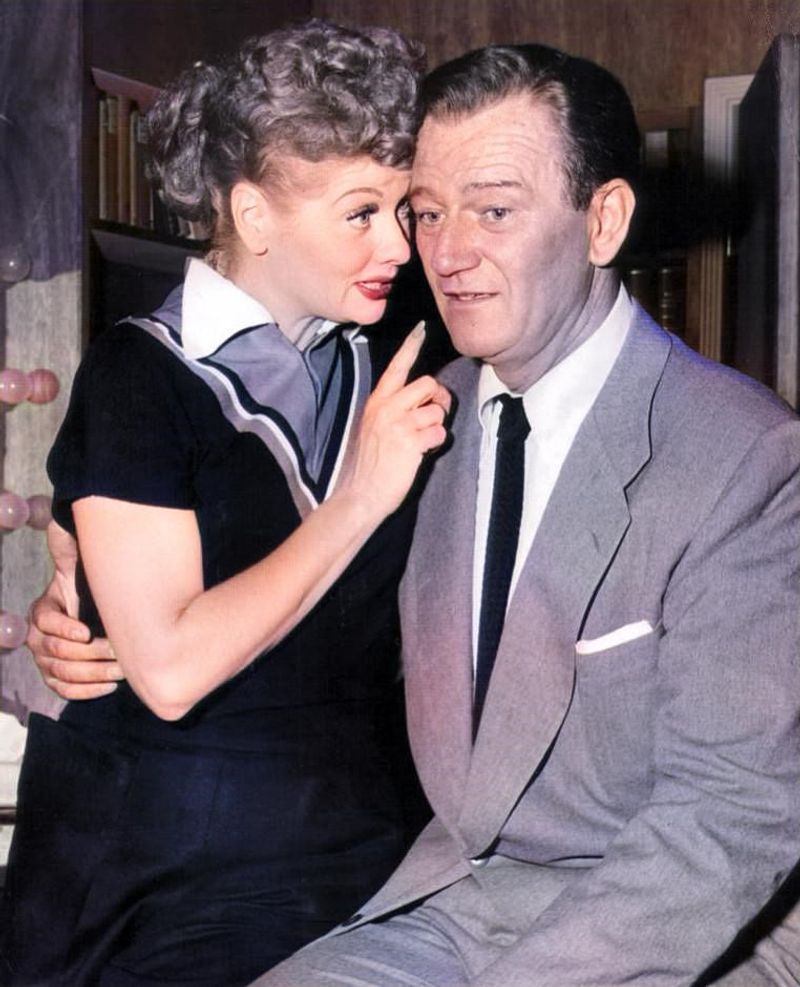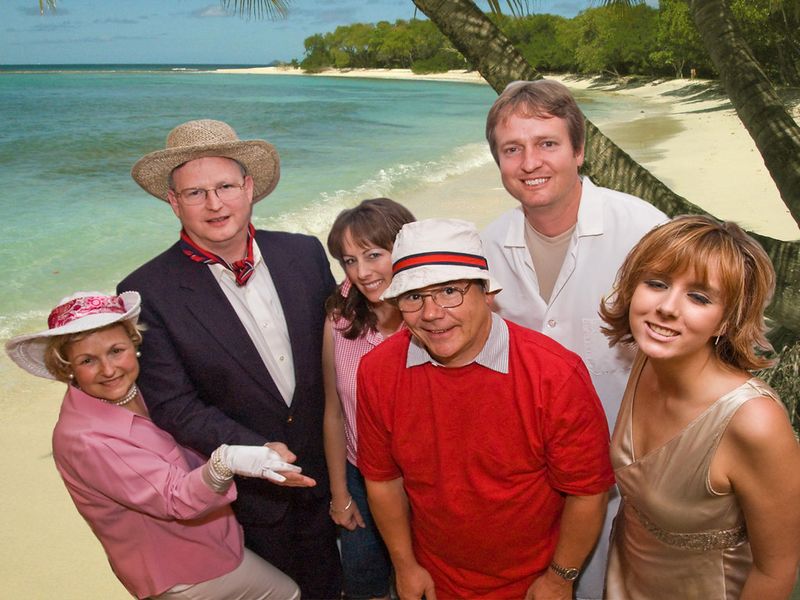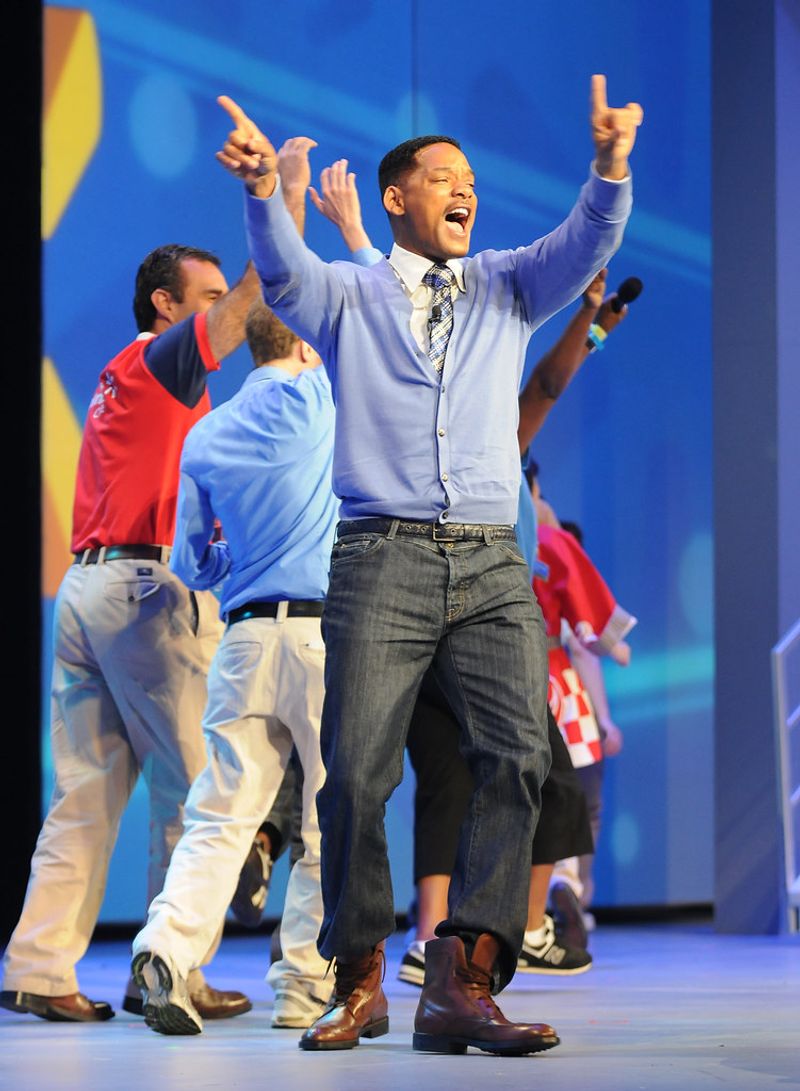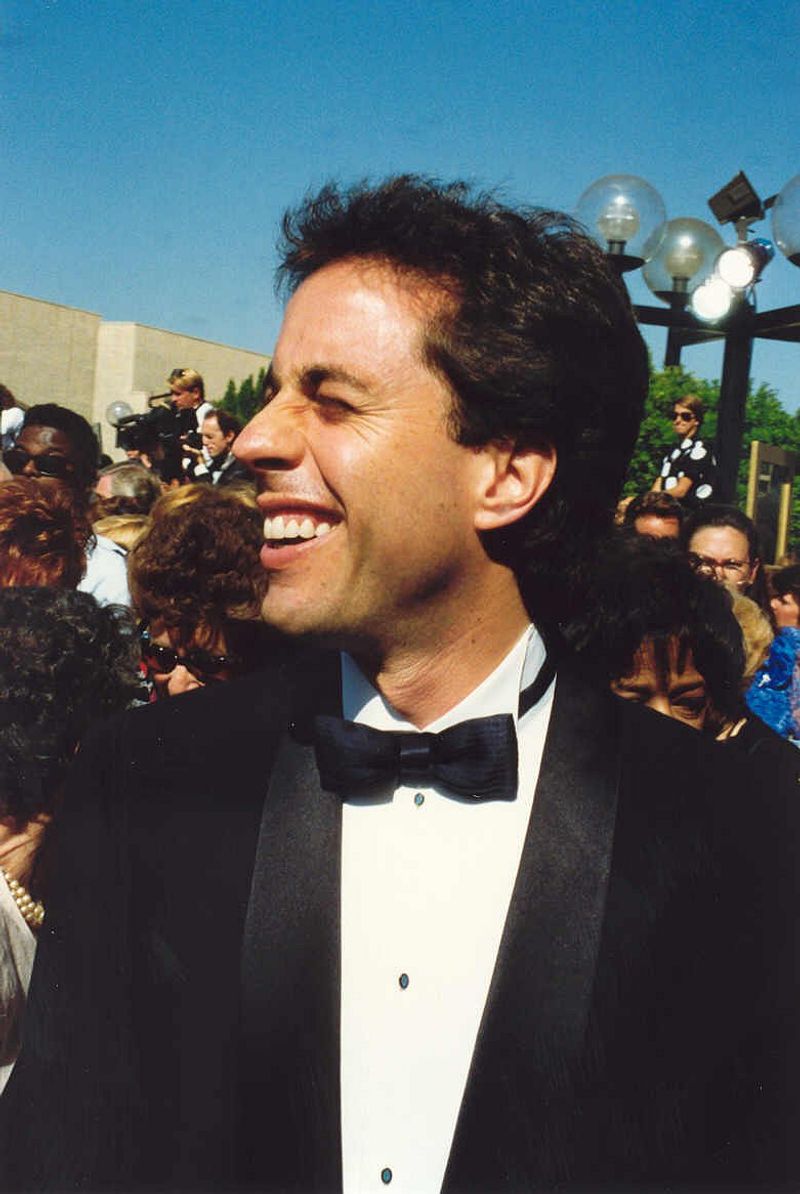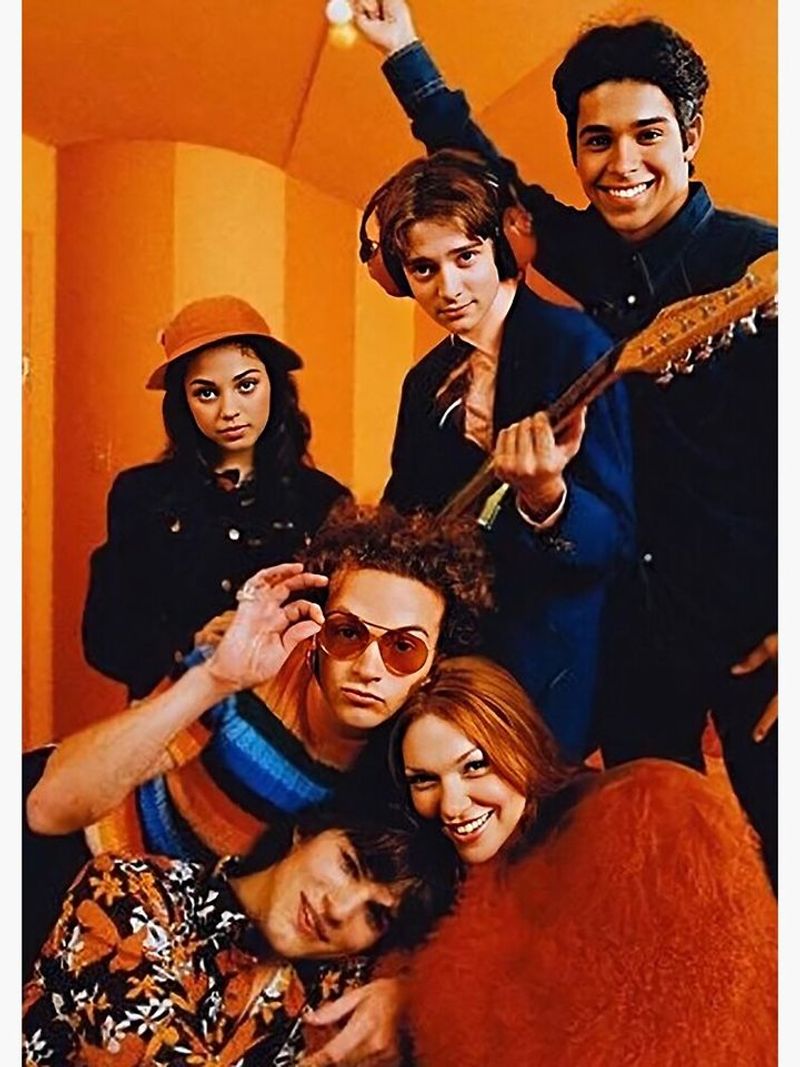Television has changed a lot over the decades, and so have our values about what’s funny or acceptable. Many classic sitcoms featured jokes and storylines that seemed harmless back then but now make us cringe. From outdated stereotypes to questionable behavior played for laughs, these old episodes reveal just how much society has evolved in understanding respect, equality, and sensitivity.
1. Three’s Company: Jack Pretends to Be Gay
Jack Tripper needed a place to live, and two women had an extra room. But their landlord wouldn’t allow men and women to share an apartment unless special circumstances applied. So Jack came up with a plan: pretend to be gay so the landlord would approve.
The entire premise relied on treating someone’s sexual orientation as a costume you could put on and take off. Episodes constantly used misunderstandings about Jack’s fake identity for laughs. Viewers today recognize that reducing LGBTQ+ identity to a comedic disguise is deeply disrespectful and harmful, perpetuating stereotypes that marginalize real people.
2. Bewitched: Samantha Gives Up Her Powers for Her Husband
Samantha was a powerful witch who could solve any problem with a twitch of her nose. Yet Darrin, her mortal husband, constantly demanded she stop using magic to appear normal. He worried about his career and reputation, placing his comfort above her identity.
The show repeatedly pushed the message that wives should sacrifice their talents and true selves to support their husbands. Samantha’s powers represented independence and capability, which Darrin found threatening. Modern audiences see this dynamic as a troubling reflection of how women were expected to shrink themselves to fit outdated gender roles and make men feel secure.
3. Diff’rent Strokes: Child Flirtation With Adult Teacher
Arnold was an adorable kid who often got into funny situations, but one episode crossed a line. He developed a crush on his adult teacher, and the show presented his flirtation as innocent and amusing. Laugh tracks played while Arnold tried to win her affection.
Looking back, audiences recognize how problematic it is to portray a child’s romantic interest in an adult as entertainment. Even when played for laughs, these storylines minimize the seriousness of appropriate adult-child boundaries. Modern television understands that such content can send confusing messages about what relationships are acceptable and healthy.
4. MASH: Hawkeye Dresses in Women’s Clothing to Avoid Military Duty
Hawkeye Pierce was a skilled surgeon who hated war and often looked for ways to protest military life. In one episode, he wore women’s clothing to try getting discharged, hoping authorities would think him unfit for service. The entire plot treated cross-dressing as absurd and laughable.
This storyline used gender expression purely as a punchline, reducing it to something ridiculous or mentally unstable. Today we understand that how people choose to dress and express their gender identity deserves respect, not mockery. Using clothing as a comedic device to suggest someone is crazy trivializes the experiences of transgender and gender-nonconforming individuals.
5. The Dick Van Dyke Show: Blackface Comedy
Television in the 1960s sometimes included theatrical traditions that modern audiences find deeply offensive. One episode featured characters performing in blackface as part of a comedy sketch, treating it as harmless entertainment. The show presented this as just another funny bit in their variety routine.
Blackface has a painful history rooted in racism and mockery of Black people. What was once considered acceptable stage comedy is now understood as a degrading practice that perpetuates harmful stereotypes. Networks today would never air such content, and many streaming services have removed or added warnings to old episodes containing blackface.
6. Married With Children: Constant Husband Abuse as Comedy
Al Bundy spent every episode complaining about his wife Peggy, calling her lazy, unattractive, and worthless. The show treated his constant insults and belittling comments as hilarious, painting marriage as a prison and wives as burdens. Audiences were supposed to laugh at his misery and cruelty.
This kind of humor relied heavily on misogyny, portraying women as objects of ridicule. Al’s verbal abuse was never challenged or shown as harmful. Modern viewers recognize that normalizing such disrespect in relationships, even in comedy, reinforces damaging attitudes about how partners should treat each other. Healthy relationships deserve better representation.
7. Friends: Chandler’s Jokes About Janice’s Weight
Chandler Bing was known for his sarcastic humor and awkward relationships. Throughout the series, he made jokes about women’s bodies, including comments about weight that were meant to get laughs. Janice, his on-again, off-again girlfriend, was sometimes the target of these remarks.
Body-shaming disguised as comedy has fallen out of favor as society becomes more aware of its harmful effects. Making fun of someone’s weight or appearance can damage self-esteem and perpetuate unrealistic beauty standards. Today’s comedies are more careful about punching down or using physical appearance as an easy punchline, recognizing that everyone deserves respect regardless of how they look.
8. The Brady Bunch: Unattractive Friend Stereotype
Several episodes featured storylines about the importance of inner beauty, but they often did so by making fun of characters labeled as unattractive. The Brady kids would learn lessons about not judging people by appearances, yet the shows still relied on mean-spirited jokes about the less pretty friend.
These episodes sent mixed messages, claiming to teach kindness while simultaneously mocking people for not meeting conventional beauty standards. Modern audiences see the hypocrisy in using someone’s appearance as a teaching tool. True lessons about acceptance shouldn’t come at the expense of making anyone feel bad about how they look.
9. The Honeymooners: Domestic Abuse Played for Laughs
Ralph Kramden had a famous catchphrase: threatening to send his wife Alice to the moon with one punch. He would yell, wave his fist, and tower over her while audiences laughed. The show treated his explosive anger and threats as exaggerated comedy, not genuine danger.
Even though Ralph never actually hit Alice, normalizing threats of violence in marriage is deeply troubling. Domestic abuse is never funny, regardless of whether physical harm occurs. Modern television recognizes that intimidation and verbal aggression are forms of abuse. What 1950s audiences found hilarious, today’s viewers see as a disturbing portrayal of an unhealthy, frightening relationship dynamic.
10. All in the Family: Edith’s Assault Joke in Birthday Episode
All in the Family was known for tackling controversial topics, but one episode went too far. During Edith’s 50th birthday party, a storyline involving attempted sexual assault was treated with inappropriate lightness. The show tried balancing serious subject matter with its usual comedic tone, creating an uncomfortable mix.
Sexual assault is never material for jokes or shock humor. While the show may have intended to address a real issue, the execution trivialized something deeply traumatic. Modern television handles such topics with far greater sensitivity, understanding that survivors deserve respect and that violence should never be minimized for entertainment purposes or ratings.
11. Bewitched: Husband’s Career Overrules Wife’s Identity
Darrin Stevens worked in advertising and constantly worried that Samantha’s magic would ruin his professional reputation. He made her promise repeatedly not to use her powers, especially around his boss or clients. His career anxiety always took priority over her needs and identity.
This dynamic reflected 1960s expectations that wives should support their husbands’ ambitions above all else, even sacrificing their own talents. Darrin’s insecurity about having a powerful wife revealed deeper issues about gender roles and male authority. Today’s audiences question why Samantha stayed with someone who asked her to hide her true self rather than celebrating her extraordinary abilities.
12. Three’s Company: Mistaken Identity as Gay Roommate
The entire foundation of Three’s Company rested on Jack maintaining a false identity as gay. Every episode risked exposure if the landlord discovered the truth. The show mined endless jokes from close calls, misunderstandings, and Jack’s exaggerated mannerisms when the landlord appeared.
Using LGBTQ+ identity as an ongoing gag reduced real people’s lives to a comedic prop. The premise suggested being gay was something to fake for convenience, not a genuine identity deserving respect. Modern sitcoms understand that sexual orientation isn’t a costume or punchline. Representation matters, and treating LGBTQ+ characters with authenticity and dignity has become a priority.
13. Diff’rent Strokes: Jokes About Arnold’s Intelligence
Arnold Jackson was adorable and got many of the show’s best lines, but some jokes crossed into uncomfortable territory. Writers sometimes played on stereotypes about intelligence that had racial undertones. What seemed like innocent comedy actually reinforced harmful assumptions.
Comedy that relies on stereotypes, even subtle ones, can perpetuate damaging ideas about race and capability. Arnold’s character deserved better than jokes that played into prejudiced thinking. Modern television writers are more conscious about avoiding humor that punches down or relies on stereotypical characterizations, especially involving children. Representation should uplift, not reinforce negative assumptions about any group.
14. Happy Days: Richie’s Friend Pretends to Be a Woman
Happy Days celebrated 1950s nostalgia with wholesome stories about teenagers and their families. But like many sitcoms, it occasionally used cross-dressing as an easy source of laughs. One episode had a male character dressing as a woman, with the entire joke being how ridiculous and funny that was.
This type of humor treats gender expression as inherently absurd, suggesting that men wearing women’s clothing is automatically comedic. Modern audiences understand that such jokes trivialize the experiences of people who don’t conform to traditional gender expectations. Comedy has evolved to recognize that someone’s clothing choices or gender identity shouldn’t be the punchline.
15. The Jeffersons: Bigoted Neighbors as Comic Relief
The Jeffersons broke ground by showing a successful African American family, but some episodes used racist neighbors for comedy. These characters would make prejudiced comments or display bigoted attitudes, with the humor coming from their ignorance. The show tried addressing racism through satire.
While the intention may have been to mock racism, these storylines sometimes normalized prejudiced behavior by making it entertaining. Audiences laughed at racist characters rather than truly confronting the harm of discrimination. Modern television handles racism more thoughtfully, understanding that bigotry shouldn’t be played for laughs, even when the joke is supposedly on the bigot.
16. I Love Lucy: Ricky Hits Lucy in Frustration
I Love Lucy pioneered television comedy with brilliant physical humor and Lucy’s unforgettable antics. But some episodes included moments where Ricky’s frustration with Lucy’s schemes led to physical reactions that wouldn’t be acceptable today. These moments were played as slapstick comedy.
Even in exaggerated sitcom format, depicting any physical aggression between spouses sends troubling messages. What 1950s audiences saw as harmless comedy, modern viewers recognize as normalizing domestic violence, even in mild forms. Television now understands that relationship conflicts should be resolved through communication, not physicality, and that comedy shouldn’t blur the lines around what constitutes abuse.
17. Gilligan’s Island: Native Stereotypes and Cultural Mockery
Whenever Gilligan and the castaways encountered island natives or foreign visitors, the show relied heavily on stereotypes. These characters spoke in broken English, wore exaggerated costumes, and behaved according to outdated, offensive caricatures. The humor came from mocking unfamiliar cultures.
Such portrayals perpetuated harmful stereotypes about indigenous peoples and non-Western cultures, treating them as primitive or ridiculous. Modern audiences understand that cultural mockery isn’t harmless fun but rather reinforces prejudice and disrespect. Today’s television strives for authentic representation, consulting with cultural experts and avoiding caricatures that dehumanize or demean any group of people.
18. The Fresh Prince of Bel-Air: Will’s Misadventures Played as Criminal Humor
Will Smith’s character often got into trouble, sometimes involving minor illegal activities that were treated lightly for comedy. His street-smart background contrasted with his wealthy relatives, and occasionally that led to situations involving petty crime or rule-breaking played for laughs.
While the show had positive messages overall, some storylines could be criticized for trivializing illegal behavior or playing into stereotypes about young Black men and crime. Modern viewers are more sensitive to how such portrayals can reinforce harmful assumptions. Comedy should avoid perpetuating stereotypes, especially when they contribute to real-world prejudice and discrimination that affects communities.
19. Seinfeld: The Cigar Store Indian Episode
Jerry bought a wooden Native American statue as a gift, not realizing how offensive it was. The episode made jokes about cultural insensitivity, with Jerry awkwardly trying to navigate his mistake. While the show acknowledged the problematic nature, it still used stereotypes for humor.
Using Native American imagery as decoration or comedy props perpetuates harmful stereotypes and reduces rich cultures to caricatures. Even when shows acknowledge the offense, continuing to use such imagery for entertainment remains problematic. Modern television is more careful about respecting cultural symbols and avoiding humor that trivializes or mocks indigenous peoples and their heritage.
20. That ’70s Show: Fez’s Constant Sexual Harassment
Fez was the lovable foreign exchange student, but many of his jokes involved inappropriate sexual comments and behavior toward women. He would make crude remarks, invade personal space, and pursue women aggressively, all played for laughs. His accent and cultural differences were used to excuse his actions.
What the show presented as harmless comedy actually depicted sexual harassment. Excusing inappropriate behavior because a character is foreign or socially awkward sends terrible messages about consent and respect. Modern television understands that harassment isn’t funny regardless of who does it, and that characters from other cultures shouldn’t be portrayed as naturally inappropriate or unable to understand boundaries.
